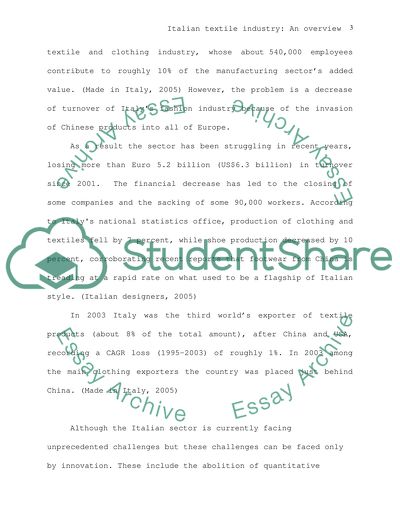Cite this document
(“Italian textile industry: An overview Essay Example | Topics and Well Written Essays - 1500 words”, n.d.)
Italian textile industry: An overview Essay Example | Topics and Well Written Essays - 1500 words. Retrieved from https://studentshare.org/miscellaneous/1533528-italian-textile-industry-an-overview
Italian textile industry: An overview Essay Example | Topics and Well Written Essays - 1500 words. Retrieved from https://studentshare.org/miscellaneous/1533528-italian-textile-industry-an-overview
(Italian Textile Industry: An Overview Essay Example | Topics and Well Written Essays - 1500 Words)
Italian Textile Industry: An Overview Essay Example | Topics and Well Written Essays - 1500 Words. https://studentshare.org/miscellaneous/1533528-italian-textile-industry-an-overview.
Italian Textile Industry: An Overview Essay Example | Topics and Well Written Essays - 1500 Words. https://studentshare.org/miscellaneous/1533528-italian-textile-industry-an-overview.
“Italian Textile Industry: An Overview Essay Example | Topics and Well Written Essays - 1500 Words”, n.d. https://studentshare.org/miscellaneous/1533528-italian-textile-industry-an-overview.


